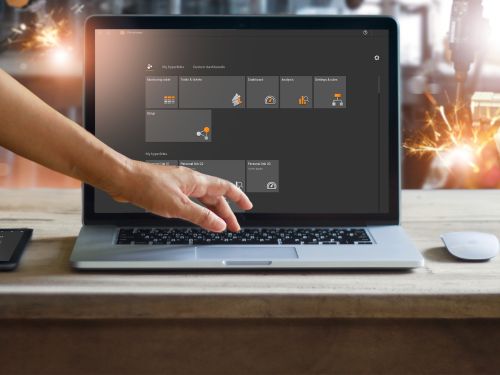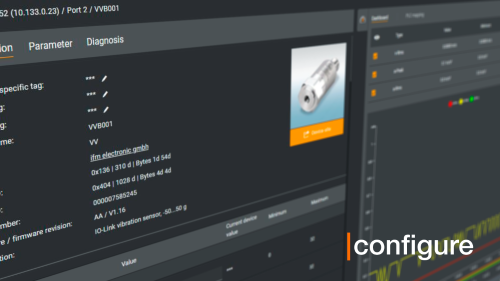ifm IIoT devices – connecting element between digitalised production and the IT level
IIoT devices are network components located at the “edge” of the network topology. They are thus also referred to as edge devices. From an IT infrastructure perspective, they are the access points to automation networks known as Operational Technology networks, also called OT networks.
The aim of IIoT devices is to exchange data between the various communicating IT and OT networks while also avoiding mutual interference. We differentiate between different groups of devices.
Some devices feature plug&work (no-code) and enable integration without extensive knowledge of automation technology or IT, while other devices are flexibly programmable.
IIoT devices are used primarily to make data and information from the automation environment, i.e. from sensors, PLCs and other automation components, available in the IT environment.
ifm IIoT devices also perform several other important tasks, such as data pre-processing, reducing data volumes, analysing data streams and boosting cyber security measures.
Comparison of ifm IIoT devices
| moneo edgeGateways | |||||
|---|---|---|---|---|---|
| io-key | moneo edgeGateway S | moneo edgeGateway | IIoT controller | moneo (v)Appliance | |
| General | |||||
| Wireless IoT gateway sends IO-Link sensor data directly to the cloud via a mobile network | Pre-installed edgeDevice can be flexibly connected from the production environment without additional license costs | Pre-installed edgeDevice can be flexibly connected from the production environment without additional license costs | Freely programmable edgeDevice and fully functional PLC with a wide range of applications | Pre-installed industrial PC (IPC) or in a virtual environment, for seamless use of moneo IIoT Core and IIoT Insights for data processing, storage, analysis and visualisation | |
| No programming skills necessary |
|||||
| remoteConnect | |||||
| Process value/s | approx. 100 | approx. 500 | |||
| OT connectors | |||||
| VSE diagnostic electronics for vibration sensors |
|||||
| IO-Link master | |||||
| OPC UA (Client) | |||||
| MQTTs (Client) | |||||
| ModbusTCP (Client) | |||||
| Miscellaneous | 2 IO-Link master ports to connect IO-Link devices |
Ethernet/IP, Profinet controller, EtherCAT master (parallel fieldbus possible) |
|||
| IT connectors | |||||
| moneo Cloud | |||||
| MQTTs | |||||
| OPC-UA (server) | |||||
| Azure IoT Hub | |||||
| AWS IoT Core | |||||
| Miscellaneous | (External clouds possible) |
HTTP(S), Modbus TCP (server), TCP/IP, UDP/IP, CODESYS Automation Server |
|||
| Data preprocessing | |||||
| Plug & Work | |||||
| Innovative user interface | |||||
| Integrated IO-Link IODD interpretation | |||||
| Buffering of data in case of connection interruption |
|||||
| Logical/mathematical functions via drag & drop |
|||||
| Miscellaneous | Data interpretation in the cloud (cloud integration without existing infrastructure) |
CODESYS V3.5 – standard PLC according to IEC 61131-3 with function packages, soft motion, IO-Link plug-in | Dashboards, long-term recording in database, events and alarms | ||
| More information | Transmission standard: NarrowBand-IoT, 2G quad-band GSM, LTE Cat-M1 moneo Cloud subscription |
No moneo Cloud subscription needed for on-premises services | No moneo Cloud subscription needed for on-premises services | ||


